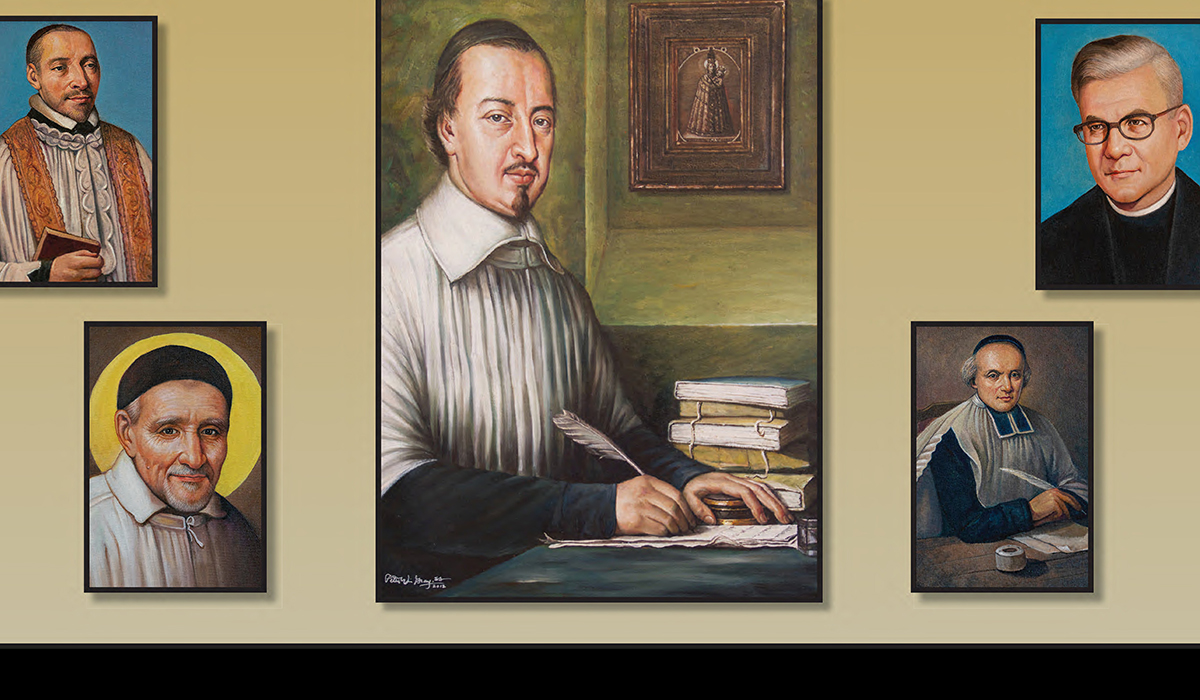Sulpician Tradition
Theological College was founded as the Sulpician Seminary at The Catholic University of America in 1917. Our formation program is guided by the principles and ethos of the Sulpician Fathers, “to live supremely for God in Christ Jesus our Lord, so much so that the inner life of His only Son should penetrate to the inmost depths of our heart and to such an extent that everyone should be able to say, ‘It is no longer I who live, but Christ who lives in me’” (Father Jean-Jacques Olier, founder of the Society of St. Sulpice). This charism embodies five essential elements: a commitment to ministerial priesthood, the cultivation of an apostolic spirit, an emphasis on spiritual formation, the creation of a formational community, and the exercise of collegiality.
The Society of the Priests of Saint Sulpice was founded in France in 1641 by Father Jean-Jacques Olier (1608–1657), an exemplar of the French School of Spirituality. A disciple of Saint Vincent de Paul and Charles de Condren, Olier took part in missions which they organized, eventually opening a seminary for the education and formation of seminarians for the Church of France. The Society of the Priests of Saint-Sulpice is a Society of Apostolic Life of Pontifical Rite in the Catholic Church, named for the Church of Saint-Sulpice, in Paris, where Father Olier founded the first seminary. Today, priests become members of the Society only after ordination and some years of pastoral ministry. The purpose of the society is the formation and education of priests. As their main role is the education of those preparing to become members of the presbyterate, Sulpicians place great emphasis on the spiritual and intellectual growth of their own members, who commit themselves to undergoing lifelong development in these areas. The Sulpician Fathers uphold their commitment of “developing men of character, educating priests, forming pastoral leaders, and nurturing an apostolic spirit.” The Society is divided into three provinces, operating in various countries: the Provinces of France, Canada, and the United States.
For more information on the Sulpicians of the Province of the U.S., see http://www.sulpicians.org/
Sulpician History Montage: The above-pictured collection, Pere Olier: The Formation of a Society and a Soul, 1641–Present, was created by Father Peter Wm. Gray, P.S.S., between 2012 and 2020, and was installed in the Olier Room at Theological College. In the central portrait of Father Jean-Jacques Olier, founder of the Society of St. Sulpice, the image of Our Lady of Loretto in the upper right corner refers to Olier’s time as a seminarian when he went on pilgrimage to that shrine to request the healing of one of his eyes, and he was granted this healing. He is shown writing because he is known and revered for his hundreds of correspondences and the recording of his spiritual thoughts and meditations.
At the upper left, Fr. Charles Condren was mentor and confessor to Olier. This influential priest instructed Olier on the need for Eucharistic Adoration and silence in the discipline of a disciple of Jesus. Condren was also one of the great leaders of the new seminaries in France in accordance with the reforms of the Council of Trent.
Below that, St. Vincent de Paul, also advisor and confessor, prepared Olier for death and anointed him.
Lower right, Fr. Jacques-André Emery, Superior General of the Society of St. Sulpice during the French Revolution, sent the first Sulpicians to America in July 1791 in response to an invitation from Bishop John Carroll of Baltimore. Emery himself had escaped the guillotine after being imprisoned during the Reign of Terror in which 18 Sulpicians were martyred and are now beatified (their feast day is September 2).
Lastly, upper right, Fr. Constant Bouchaud was Superior General of the Society of St. Sulpice from 1972 to 1984. His vision, inspired by an intense spiritual life, stabilized the Sulpician communities during the turmoil and changes following Vatican II.

